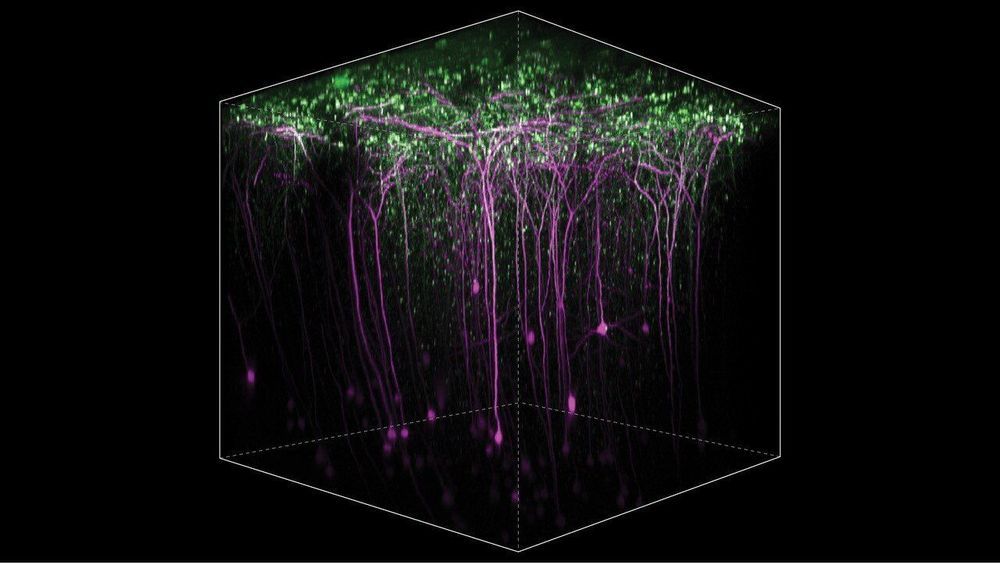Exclusive: The Irish food delivery company announces a partnership with global network company Cubic at CES.





It’s common for people to focus on their health at the start of the year.
But few consider the well being of the microbes that live inside the human gut – the microbiome – which are vital to an individual’s good health.
How important are these bacteria? There are as many bacterial cells in us as there are human cells, and they help control everything from inflammation and the development and treatment of cancer to how much energy we get from our foods and perhaps even what foods we crave and our moods.

If you’re interested in mind uploading, I have a book that I highly recommend. Rethinking Consciousness is a book by Michael S. A. Graziano, who is a Princeton University professor of psychology and neuroscience.
Early in his book Graziano writes a short summary:
“This book, however, is written entirely for the general reader. In it, I attempt to spell out, as simply and clearly as possible, a promising scientific theory of consciousness — one that can apply equally to biological brains and artificial machines.”
The theory is Attention Schema Theory.
I found this work compelling because one of the main issues in mind uploading is how do you make an inanimate object (like a robot or a computer) conscious? Graziano’s Attention Schema Theory provides a methodology.
After reading the book, be sure to read the Appendix, in which he writes:
“First, it serves as a tutorial on the attention schema theory. The underlying logic of the theory will be described in its simplest form. Second, I hope that the exercise will show engineers a general path forward for artificial consciousness.”
Focusing attention can help an animal find food or flee a predator. It also may have led to consciousness. Tracing evolution over millions of years, Michael S. A. Graziano uses examples from the natural world to show how neurons first allowed animals to develop simple forms of attention: taking in messages from the environment, prioritizing them, and responding as Focusing attention can help an animal find food or flee a predator. It also may have led to consciousness. Tracing evolution over millions of years, Michael S. A. Graziano uses examples from the natural world to show how neurons first allowed animals to develop simple forms of attention: taking in messages from the environment, prioritizing them, and responding as necessary.
Clusters composed of a few atoms tend to be spherical. They are usually organized in shells of atoms around a central atom. This is the case for many elements, but not for gold! Experiments and advanced computations have shown that freestanding clusters of twenty gold atoms take on a pyramidal shape. They have a triangular ground plane made up of ten neatly arranged atoms, with additional triangles of six and three atoms, topped by a single atom.
The remarkable tetrahedral structure has now been imaged for the first time with a scanning tunnelling microscope. This high-tech microscope can visualise single atoms. It operates at extremely low temperatures (269 degrees below zero) and uses quantum tunnelling of an electrical current from a sharp scanning metallic tip through the cluster and into the support. Quantum tunnelling is a process where electrical current flows between two conductors without any physical contact between them.
The researchers used intense plasmas in a complex vacuum chamber setup to sputter gold atoms from a macroscopic piece of gold. “Part of the sputtered atoms grow together to small particles of a few up to a few tens of atoms, due to a process comparable with condensation of water molecules to droplets,” says Zhe Li, the main author of the paper, currently at the Harbin Institute of Technology, Shenzhen. “We selected a beam of clusters consisting of exactly twenty gold atoms. We landed these species with one of the triangular facets onto a substrate covered with a very thin layer of kitchen salt (NaCl), precisely three atom layers thick.”
The study also revealed the peculiar electronic structure of the small gold pyramid. Similar to noble gas atoms or aromatic molecules, the cluster only has completely filled electron orbitals, which makes them much less reactive than clusters with one or a few atoms more or less.
Gold clusters ranging from a few to several dozens of atoms in size are known to possess remarkable properties.
Freestanding clusters of twenty gold atoms take the shape of a pyramid, researchers discovered. This is in contrast with most elements, which organize themselves by forming shells around one central atom.

Whenever someone refers me to a story with alarming facts that should surprise or outrage any thinking human, my spider-sense is activated. Does the story make sense? Is it plausible? If the message contains evidence of being repeated (or forwarded to more than two friends), then whatever is claimed is almost certain to be false.
If the subject is important to me—or if there is any chance that it might influence my view of the world, I check it at Snopes. The reputable web site confirms or debunks many urban legends and all sorts of viral web hype.
You never know what you might learn at Snopes. You can easily be lured into a rabbit hole, digging into the site beyond whatever prompted your visit in the first place.
Fact-checking can be fun! For example:
I’m still occasionally guilty of passing along a story I long believed was gospel. In a few cases, it didn’t occur to me that something accepted as fact might be an urban legend—or that my acceptance of a tall tale is colored by my opinions about economics, society and business. Hopefully, this is a rare and diminishing lapse. I have learned to fact check narratives—especially if I feel compelled to pass one along.
Conspiracies Theories: Often false!
In general, I am unlikely to suspect a conspiracy behind events of the day—with the exception of national politics, where conspiracy is a natural and pervasive tactic. The problem is my optimistic view of human nature. While businesses have a profit motive and a responsibility to stakeholders, I feel that most are driven by ethics and that executing a plan within the bounds of ethics is simply good for business.
Let me tell you about one viral, big-business story that I had believed for decades and another that I did not believe until I was presented with too many facts to refute.
1. No Conspiracy Here

There was no secret meeting or conspiracy by titans of the car, rubber, oil or steel industries to kill off public transportation and alter city layouts to drive auto sales. Streetcars were already mired in politics and graft; family, income was increasing, and the car was already becoming popular.
That tall tale says that Harvey Firestone, Henry Ford and John D. Rockefeller conspired to eliminate street cars and redesign the urban landscape, so that Americans would need individual family cars, rather than use public transportation—Or that this is the reason that we must drive to a big mall today rather than live in towns centered around a community center, church, city hall and general store.
The theory claims that the three automobile bosses had a secret meeting in San Francisco with a goal of increasing sales of cars, rubber, steel and oil. (In some versions of the story, Rockefeller (oil) is replaced Andrew Carnegie (steel). Ironically, I only learned that the entire story was an urban legend as I started to write this introduction to the true story below.
2. Shocking Conspiracy — This one is true
More than any other lie, here is a food industry conspiracy crafted and delivered by big business. It manipulated one of our most trusted universities, a major medical journal and the public psyche. The result: Thousands of Americans died and millions were misled into obesity and heart disease. More than any other fiendish plot, this one event has killed people and damaged human health more than any other conspiracy in modern history.

In 1967, the sugar industry shaped 50 years of research into the role of nutrition and heart disease, including many of today’s dietary recommendations, by paying Harvard researches to lie about the role of food in obesity and heart disease. They schemed and succeeded at shifting blame from sugar to fats.
Believing lies: I grew up becoming fully indoctrinated!…
For much of the next five decades, the wheat and grain industry promulgated the lie to enormous advantage. I grew up thinking that bread, pasta, rice and potato are terrific sources of healthy fiber and minerals (much like vegetables)—and that they ensure clean pipes. I thought that oil and fats are bad, because they deposit plaque in arteries. It never occurred to me that oils can maintain healthy weight, that your brain needs fat, that carbs lead a body to manufacture the fat that causes cardiovascular disease.

I believed that skim milk is less fattening than whole milk and that margarine is healthier than butter (dairy), tallow (beef fat) or lard (pig fat). Perhaps most damning: I believed that Canola oil (synthetically extracted from rape seed) was a healthy oil, because it is unsaturated. Today, I have learned it is toxic.
How does a 20th century academic
with advanced degrees get so misled?
Answer: I succumbed to a startlingly successful conspiracy; a long game in which it is now difficult to punish sugar industry perpetrators. Ultimately, they will be held to account by journalists, and a new generation of doctors, researchers and academics.
The New York Times article linked below appeared in 2016. More recently, the story is finally going viral. Citation by other reputable outlets is growing quickly.
Some conspiracy theories are true. Instead of passing along an urban legend, forward the shocking truth about sugar and carbs to a friend or colleague. Share this Lifeboat article. Think of the good achieved if you turn around the diet of just one acquaintance.
.Related:
* Fiction: Ronald Reagan did not write this; (I believed it for 30 years):
“A moment I’ve been dreading. George brought his ne’re-do-well son around this morning and asked me to find the kid a job. Not the political one who lives in Florida. The one who hangs around here all the time looking shiftless. This so-called kid is already almost 40 and has never had a real job. Maybe I’ll call Kinsley over at The New Republic and see if they’ll hire him as a contributing editor or something. That looks like easy work.”
— Incorrectly attributed to Ronald Reagan in a diary entry published May 17, 1986
Philip Raymond co-chairs CRYPSA, hosts the Bitcoin Event and is keynote speaker at Cryptocurrency Conferences. He is a top writer at Quora.

VITAMINS-Nutrients have long been described as healers-Life extending amino acids-chemicals… As has been done in the past holds true presently. There are trained professionals who for one reason or another attack the vitamin industry.
(Many claiming that vitamins do nothing and are washed from the body???)
How then did niacin extraction and synthesizing and being put into foods help end many sicknesses??? Yes Niacin is listed as a vitamin and a medicine…
So why is so much done and said against supplements??? Snake oil salesman and Big Pharma. I hate the term snake oil but it has been used against me and many others such as Doctor Aubrey de Grey…
SADLY There are those minds that have lied and harmed many down through the years by conartist-snake oil salesman… BUT For every bad product in nutrients there are 5 and more that are not so… WHAT SAY YE??? AEWR gerevivify.blogspot.com/
Jan. 2 (UPI) — While the vast majority of over-the-counter nutritional and herbal supplements are safe — unless they are consumed in large quantities — not all of them deliver on their promised benefits.
Researchers say that the $40 billion-a-year dietary supplement industry, which covers “tens of thousands” of products, exists on the offer of some health benefit.
While many people believe they work, there is little beyond anecdotal evidence for their efficacy, experts say.

Researchers at Johns Hopkins Medicine have successfully used a laser-assisted imaging tool to “see” what happens in brain cells of mice learning to reach out and grab a pellet of food. Their experiments, they say, add to evidence that such motor-based learning can occur in multiple areas of the brain, even ones not typically associated with motor control.
“Scientists should be looking at the entire brain to understand specific types of learning,” says Richard Huganir, Ph.D., Bloomberg Distinguished Professor and Director of the Solomon H. Snyder Department of Neuroscience at the Johns Hopkins University School of Medicine. “Different parts of the brain contribute to learning in different ways, and studying brain cell receptors can help us decipher how this works.”
The work, say the researchers, may ultimately inform efforts to develop treatments for learning-based and neurocognitive disorders.